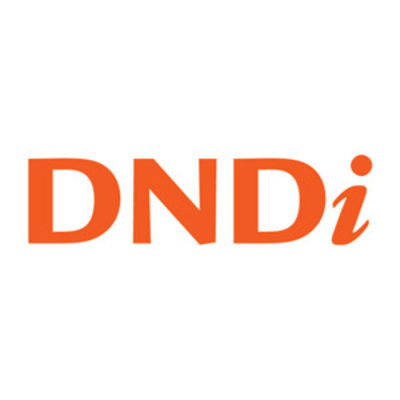预约演示
更新于:2025-05-07
Pfbc1
更新于:2025-05-07
基本信息
别名- |
简介- |
关联
7
项与 Pfbc1 相关的药物靶点 |
作用机制 Pfbc1抑制剂 |
在研适应症 |
非在研适应症- |
最高研发阶段临床前 |
首次获批国家/地区- |
首次获批日期1800-01-20 |
靶点 |
作用机制 Pfbc1抑制剂 |
在研适应症 |
非在研适应症- |
最高研发阶段临床前 |
首次获批国家/地区- |
首次获批日期1800-01-20 |
靶点 |
作用机制 Pfbc1抑制剂 |
在研适应症 |
非在研适应症- |
最高研发阶段临床前 |
首次获批国家/地区- |
首次获批日期1800-01-20 |
1
项与 Pfbc1 相关的临床试验NCT00811356
A Single-Blind, Placebo-Controlled, Randomized First Time in Human Study to Evaluate the Safety, Tolerability, and Pharmacokinetics of Single and Repeat Dose Escalation of GSK932121 in Healthy Adult Subjects
The purpose of this study is to determine if the study drug (antimalarial medication) is safe when given to healthy subjects as a single dose or as repeated doses, to understand the effect of food on single doses of study drug and to determine if the study drug has an effect on other approved medications such as rosiglitazone and rosuvastatin.
开始日期2008-12-11 |
申办/合作机构 |
100 项与 Pfbc1 相关的临床结果
登录后查看更多信息
100 项与 Pfbc1 相关的转化医学
登录后查看更多信息
0 项与 Pfbc1 相关的专利(医药)
登录后查看更多信息
5
项与 Pfbc1 相关的文献(医药)2023-12-13·Science Translational Medicine1区 · 医学
DNDI-6174 is a preclinical candidate for visceral leishmaniasis that targets the cytochrome bc
1
1区 · 医学
Article
作者: Chatelain, Eric ; Zuccotto, Fabio ; Deakyne, Julianna ; Breese, Karen J ; Feijens, Pim-Bart ; Maes, Louis ; Brunori, Gino ; White, Karen L ; Hendrickx, Sarah ; Van Pelt, Natascha ; González, Silvia ; Katneni, Kasiram ; Chemi, Giulia ; Heppell, Jacob ; Islam, Rafiqul ; Shackleford, David M ; Zulfiqar, Bilal ; Wall, Richard J ; Castañeda-Casado, Pablo ; Wyllie, Susan ; Lyon, Jonathan J ; Camino, Isabel ; Patil, Rahul ; Crighton, Elly ; Caljon, Guy ; Matheeussen, An ; Avery, Vicky M ; Braillard, Stéphanie ; Charman, Susan A ; Standing, David ; Yardley, Vanessa ; Chen, Gong ; Lee, Given ; Martinez Martinez, Maria S ; Marco, Maria ; Carvalho, Sandra ; Abbott, Michael ; Keenan, Martine
2022-10-11·ACS Omega
Design of Anti-infectious Agents from Lawsone in a Three-Component Reaction with Aldehydes and Isocyanides
Article
作者: Salina, Elena G. ; Degiacomi, Giulia ; Vendier, Laure ; Benoit-Vical, Françoise ; Anne Robert ; Bijani, Christian ; García-Sosa, Alfonso T. ; Loiseau, Philippe M. ; Baltas, Michel ; Koumpoura, Christina L. ; Buroni, Silvia ; Cojean, Sandrine ; Nguyen, Michel
2017-04-01·Memórias do Instituto Oswaldo Cruz4区 · 医学
Insights into cytochrome bc1 complex binding mode of antimalarial 2-hydroxy-1,4-naphthoquinones through molecular modelling
4区 · 医学
ArticleOA
作者: Ferreira, Sabrina Baptista ; Sodero, Ana Carolina Rennó ; Pascutti, Pedro Geraldo ; Ferreira, Vitor Francisco ; Torres, Pedro Henrique Monteiro ; Silva, Floriano Paes ; Abrahim-Vieira, Bárbara ; Rocha, David Rodrigues da ; Garcia, Célia Rs
分析
对领域进行一次全面的分析。
登录
或

生物医药百科问答
全新生物医药AI Agent 覆盖科研全链路,让突破性发现快人一步
立即开始免费试用!
智慧芽新药情报库是智慧芽专为生命科学人士构建的基于AI的创新药情报平台,助您全方位提升您的研发与决策效率。
立即开始数据试用!
智慧芽新药库数据也通过智慧芽数据服务平台,以API或者数据包形式对外开放,助您更加充分利用智慧芽新药情报信息。
生物序列数据库
生物药研发创新
免费使用
化学结构数据库
小分子化药研发创新
免费使用



